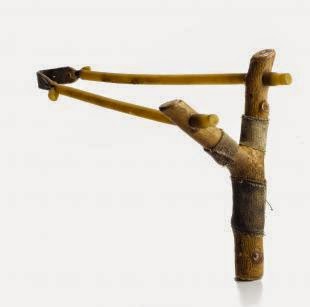Joint-By-Joint, the Big Picture
Before getting to the mammoth post of hips (it’ll at least be a two parter), I wanted to take a step back and reveal some patterns within the body that outline joint function.
We started with the feet, which are a stable joint. The ankles were mobile, and the knees were stable. If you haven’t guessed, they flip flop up and down the chain.
To clarify and fully wrap your head around this concept, lets use some definitions and an analogy popularized by Charlie Weingroff.
A stable joint = a joint that is designed to MAINTAIN position in the presence of change (acceleration, deceleration, angles and positioning)
A mobile joint = a joint designed to MOVE
He likens these two types of joints to a slingshot.
The stable joints are the handle. The mobile joints are the rubber band. If the stable joint cannot remain steady, the mobile joints have nothing to pull on and the muscular force potential remains ‘slack’.
Bottom line: joints should do what they’re supposed to. When a mobile joint gets stuck and acts more like a stabilizer, or a stable joint is forced to move, pain and/or dysfunction ensues.





